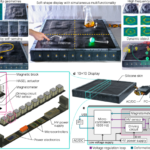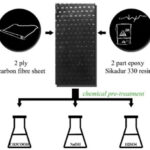2023-07-18 アメリカ合衆国・タフツ大学
・ タフツ大学が、葉、殻、茎や木片等の「廃棄物系バイオマス」を餌とする遺伝子組み換え酵母を開発。
・ 近年、改良した酵母を利用して医薬品やバイオ燃料等の有用な製品を作製する「合成生物学」 と呼ばれる、有害な化学物質不使用のスマートな技術が新興している。この技術が大規模展開する将来を見据えると、酵母に与える餌について人間の食料以外のものを検討する必要がある。
・ 新酵母は、収穫後に捨てられることの多いトウモロコシの茎、殻や葉、小麦の茎等の、消化しにくい木質部分から抽出できるキシロース、アラビノースやセロビオース等の糖類を餌とする。これらの廃棄物系バイオマスの排出量は毎年約 13 億トンにも上るため、大規模な酵母生合成産業の展開に十分な量を超える糖類を提供できる。
・ また、酵母で合成したバイオ燃料を燃やせば CO2 を排出するが、この CO2 は翌年穀物が再吸収し、酵母がそれらを餌にしてより多くのバイオ燃料を作るため、廃棄物系バイオマスを餌にすることでカーボンフットプリントを低減できる。
・ 本研究では、酵母がガラクトースの分解の制御に使用する遺伝子群のレギュロン(ガラクトースレギュロン)を改良し、酵母による廃棄物系バイオマスの糖類の効率的な分解に成功。レギュロンには糖を感知するセンサー遺伝子が含まれ、酵素による糖の分解を誘因する。
・ 過去の研究でのガラクトースレギュロンの改良により、バイオマスの糖のキシロースをセンサーが感知し、ガラクトースに代わってキシロースを酵素に分解させることに成功しているが、今回はバイオマスの全糖類の分解を目指した。
・ このレギュロンのセンサータンパク質にキシロース、アラビノースとセルビオースを受容させるよう改良した新しいレギュロンでは、グルコースやガラクトースのネイティブな糖類に匹敵する速度でそれらの糖類を分解した。
・ 酵母が棄物バイオマスの糖類を消費できるようになることで、インスリンや抗体等の薬剤を含む生合成製品の生産が向上する。
URL: https://now.tufts.edu/2023/07/18/bioengineered-yeast-feed-agricultural-waste
<NEDO海外技術情報より>
関連情報
Metabolic Engineering 掲載論文(アブストラクトのみ:全文は有料)
Towards universal synthetic heterotrophy using a metabolic coordinator
URL: https://www.sciencedirect.com/science/article/abs/pii/S109671762300099X?via%3Dihub
Abstract
Engineering the utilization of non-native substrates, or synthetic heterotrophy, in proven industrial microbes such as Saccharomyces cerevisiae represents an opportunity to valorize plentiful and renewable sources of carbon and energy as inputs to bioprocesses. We previously demonstrated that activation of the galactose (GAL) regulon, a regulatory structure used by this yeast to coordinate substrate utilization with biomass formation during growth on galactose, during growth on the non-native substrate xylose results in a vastly altered gene expression profile and faster growth compared with constitutive overexpression of the same heterologous catabolic pathway. However, this effort involved the creation of a xylose-inducible variant of Gal3p (Gal3pSyn4.1), the sensor protein of the GAL regulon, preventing this semi-synthetic regulon approach from being easily adapted to additional non-native substrates. Here, we report the construction of a variant Gal3pMC (metabolic coordinator) that exhibits robust GAL regulon activation in the presence of structurally diverse substrates and recapitulates the dynamics of the native system. Multiple molecular modeling studies suggest that Gal3pMC occupies conformational states corresponding to galactose-bound Gal3p in an inducer-independent manner. Using Gal3pMC to test a regulon approach to the assimilation of the non-native lignocellulosic sugars xylose, arabinose, and cellobiose yields higher growth rates and final cell densities when compared with a constitutive overexpression of the same set of catabolic genes. The subsequent demonstration of rapid and complete co-utilization of all three non-native substrates suggests that Gal3pMC-mediated dynamic global gene expression changes by GAL regulon activation may be universally beneficial for engineering synthetic heterotrophy.




